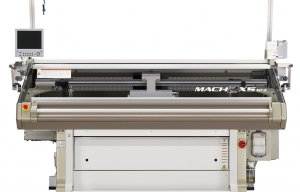
Uniqlo to scale up on-demand Wholegarment production
Lunigiane, a knitwear manufacturer located in the small Tuscan town of Aulla in the province of Massa and Carrara

10th November 2015
Knitting Industry
|
Tuscany
Shima Seiki’s WHOLEGARMENT knitting technology, a revolutionary method of flat knitting that allows the production of ‘seam-free’ knitwear, is celebrating its 20th anniversary this year. The technology was launched at ITMA in Milan in 1995 and this month from the 12th-19th of November, Shima Seiki will return to the city to celebrate at ITMA 2015.
This article, one of a WHOLEGARMENT series, sets out to investigate the impact of WHOLEGARMENT technology on Italy’s knitwear industry and its leading exponents.
In September I travelled to Italy to visit a group of knitwear manufacturers who are all successfully using Shima’s WHOLEGARMENT technology. After visiting IMAX in Reggio Emilia, a company whose sole purpose is to make samples for the Max Mara, I am on my way to visit Lunigiane, an innovative knitwear manufacturer based in Tuscany, which is dedicated to supplying the Max Mara brands.
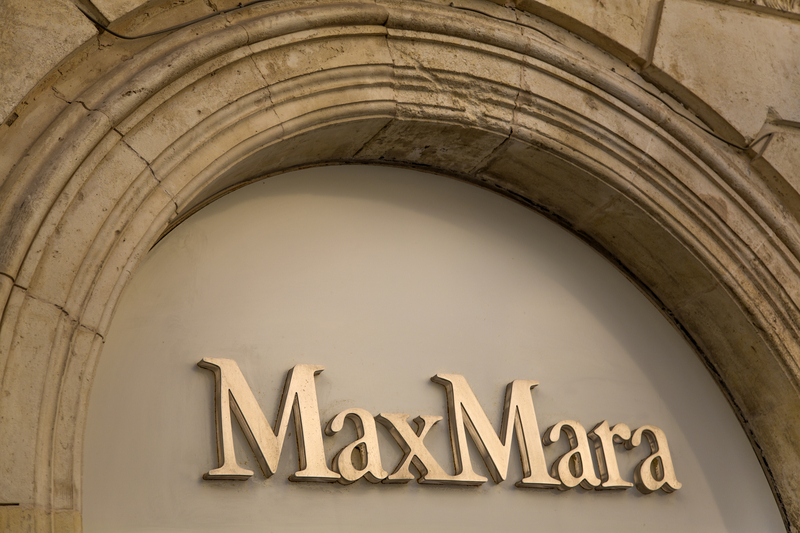
Max Mara is a luxury Italian fashion house belonging to the Max Mara Fashion Group, founded by Achille Maramotti who began designing couture clothing in 1947. The group comprises of 37 different brands, many of which are strong in knitwear, and the Max Mara womenswear main line remains at the core of the company. Other labels include Sportmax, Sportmax Code, Weekend Max Mara, Marella, Pennyblack, iBlues and Marina Rinaldi.
From Max Mara’s birthplace in Reggio Emilia, we drive through the Appenine mountains via the beautiful Appennino Tosco-Emiliano National Park a state-held natural preserve, located in an area of outstanding natural beauty. It was founded in 2001, and touches the provinces of Massa and Carrara, Lucca, Reggio Emilia and Parma.
Lunigiane is a knitwear manufacturer located in the small Tuscan town of Aulla in the province of Massa and Carrara which has a population of just over 10,000. The company has 48 employees and its customers are the Max Mara brands.
Max Mara has a 51% shareholding in Lunigiane, with the remaining 49% being owned by Piero Carlotti who manages the company. Piero Carlotti is very much a hands on owner – he even turns his hand to programming Shima Seiki knitting machines. Piero has 50+ years of experience in textiles having managed company’s in the weaving, circular knitting and now flat knitting sectors.
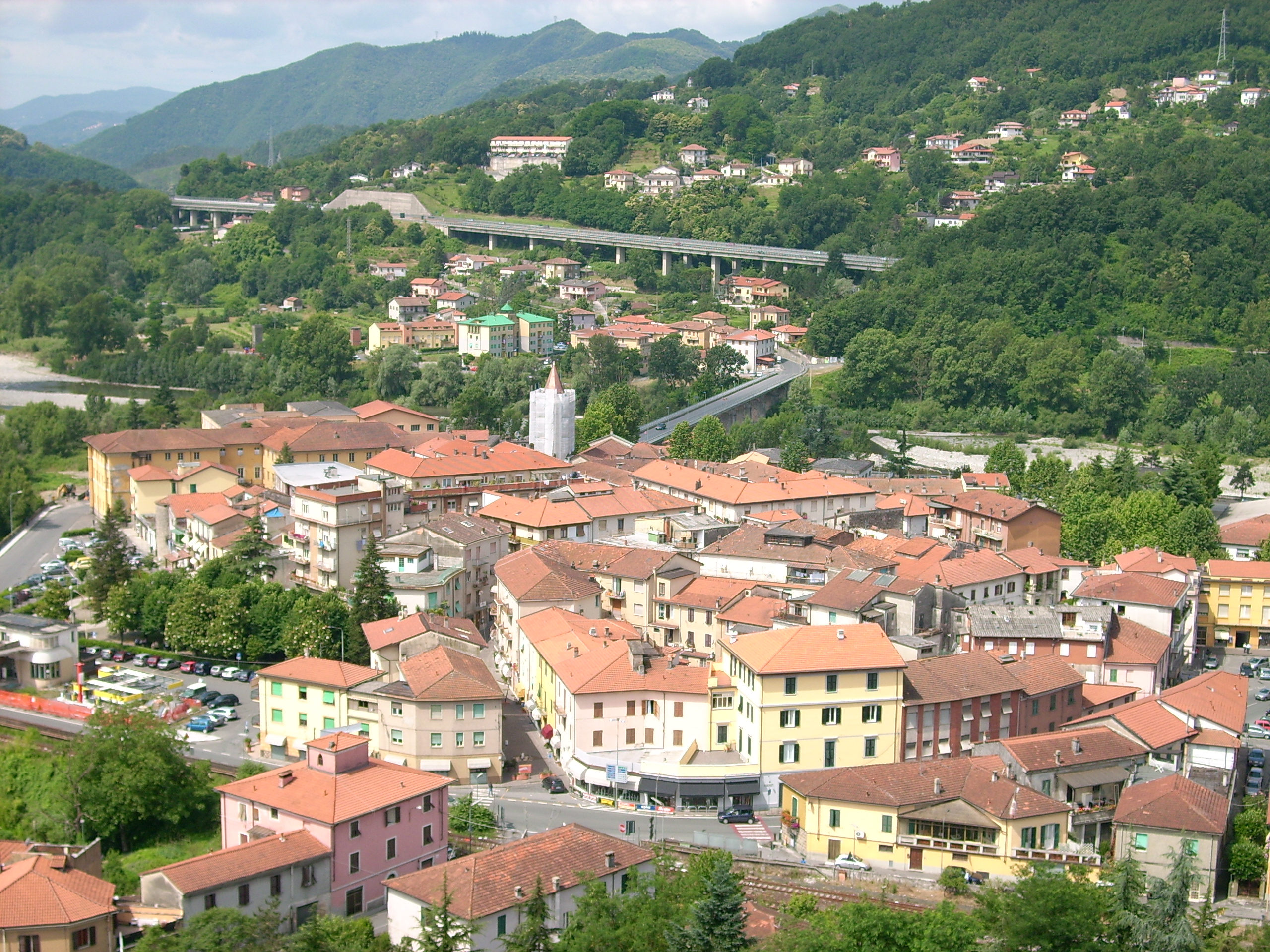
The Lunigiane company takes its name from the area in which it is located. Lunigiana is an historical area, which today falls within the provinces of La Spezia and Massa Carrara. It is a mountainous region which runs from the Apennines to the Mediterranean Sea.
The company has a full range of more than sixty advanced Shima Seiki machines, many of which are WHOLEGARMENT models, as follows:
The company started working with WHOLEGARMENT technology in 1999 when Piero Carlotti bought his first Shima Seiki SWG-V machine. Today, WHOLEGARMENT knitwear makes up around 50% of his total production.

Piero Carlotti cites time saved in processing and reduction in labour costs as the main benefits of using WHOLEGARMENT technology. He says it is also very difficult to find linkers especially for the fine gauges, which is not surprising as this is not really an area known for its knitwear manufacturing.
When I ask if the return on investment with WHOLEGARMENT is satisfactory Piero Carlotti smiles wryly and simply says: “I would encourage Dr. Shima to continue in this direction.” In other words, he is very satisfied.
Most of the yarns that Lunigiane processes are from the leading Italian spinners although some do come from other sources. When I visited there were a wide assortment of cotton, linen and viscose yarns being knitted in spring-summer WHOLEGARMENT styles.
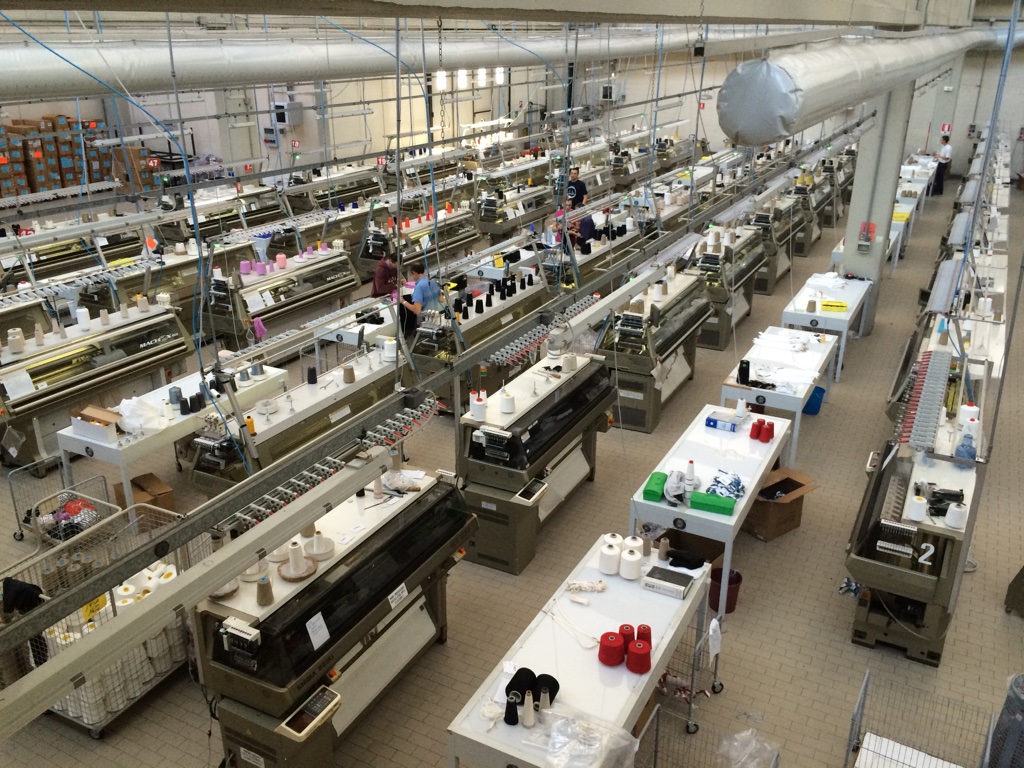
I ask Piero what other benefits there are and what he thinks needs to change to enable wider acceptance of WHOLEGARMENT technology.
“As I said before, the most important benefit is that we can save on linking and other garment make-up costs and therefore reduce our overall manufacturing cost,” he reiterates.
“But in terms of wider acceptance of the technology, I think that designers need to be educated so that they can understand the technology. Many of the designers do not knit and they do not understand the technical possibilities,” Piero adds. Likewise, he does not think that the benefits are yet understood by consumers.
Piero Carlotti thinks it is important to always buy the latest technology and in that respect he is planning to increase WHOLEGARMENT knitwear production at Lunigiane.
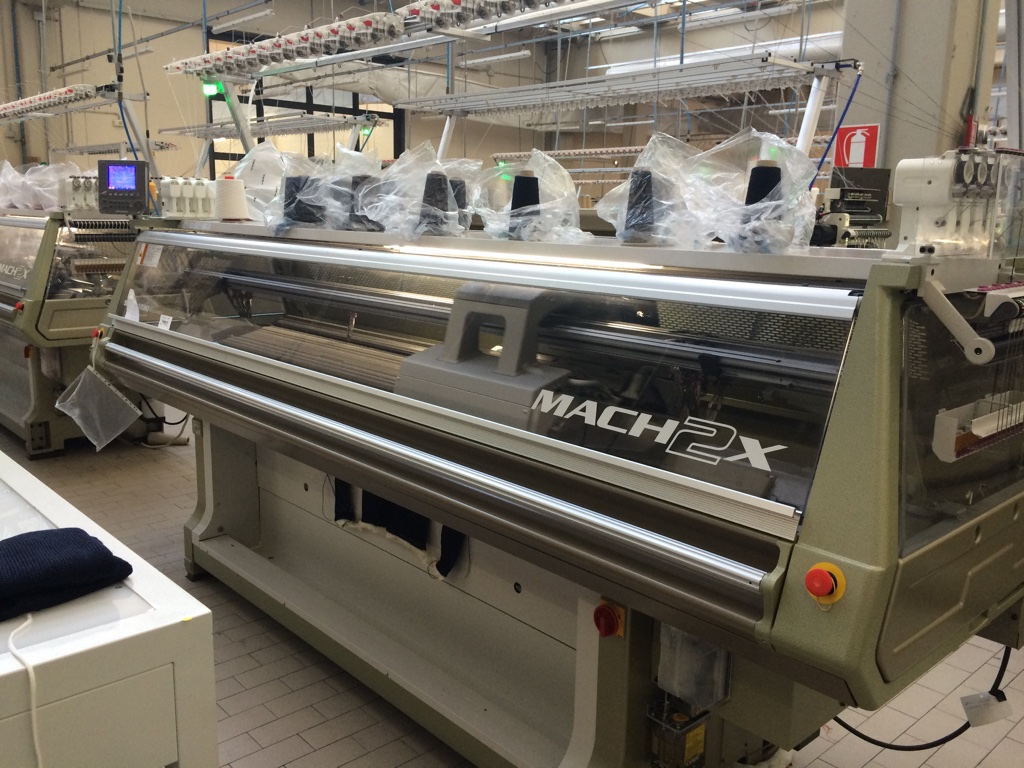
I ask if there is anything that he thinks could be improved with WHOLEGARMENT technology. “I would ask Dr Shima to develop machine that can integrally knit high quality necks. Shima’s recently launched MACH2XS machine could be a start in this respect,” Piero Carlotti says.
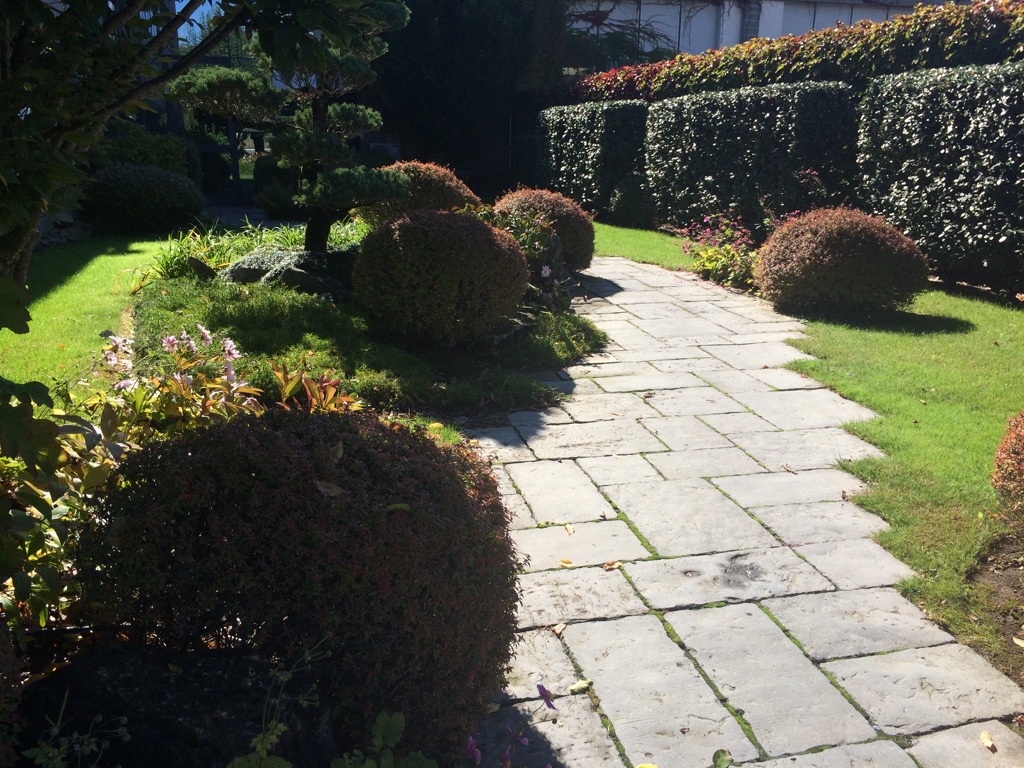
The new MACH2XS WHOLEGARMENT specialty machine features 4 needlebeds and Shima’s original SlideNeedle, the combination of which is considered ideal for producing WHOLEGARMENT knitwear in all needles. MACH2XS additionally features the world's first application of the Japanese company’s patented spring-type sinkers on a 4-needlebed machine, permitting high quality knitting of complex fabrics. Flechage is said to be especially easier to knit, allowing more control over neck drop depth which is what Piero Carlotti is referring to.
As previously mentioned, Lunigiane is a highly organised manufacturer and an early adopter of new technologies. The company uses RFID (Radio-frequency identification) technology to track order progress through the factory - RFID is the wireless use of electromagnetic fields to transfer data, for the purposes of automatically identifying and tracking tags attached to objects.
There also seems to be a real integrated approach to business here. Financing for capital investment at Lunigiane for example is provided by Credem bank which is owned by the Maramotti family. Max Mara even has an interest in the Italian yarn spinner Lana Gato.
According to Piero Carlotti, Lunigiane is reasonably self sufficient and does not require too much technical support from Shima Seiki Italia, except for programming training on new techniques and technologies. Piero says he started to think about WHOLEGARMENT knitting as soon as Shima Seiki launched the technology in 1995 and plans to increase the company’s use of the technology in future.
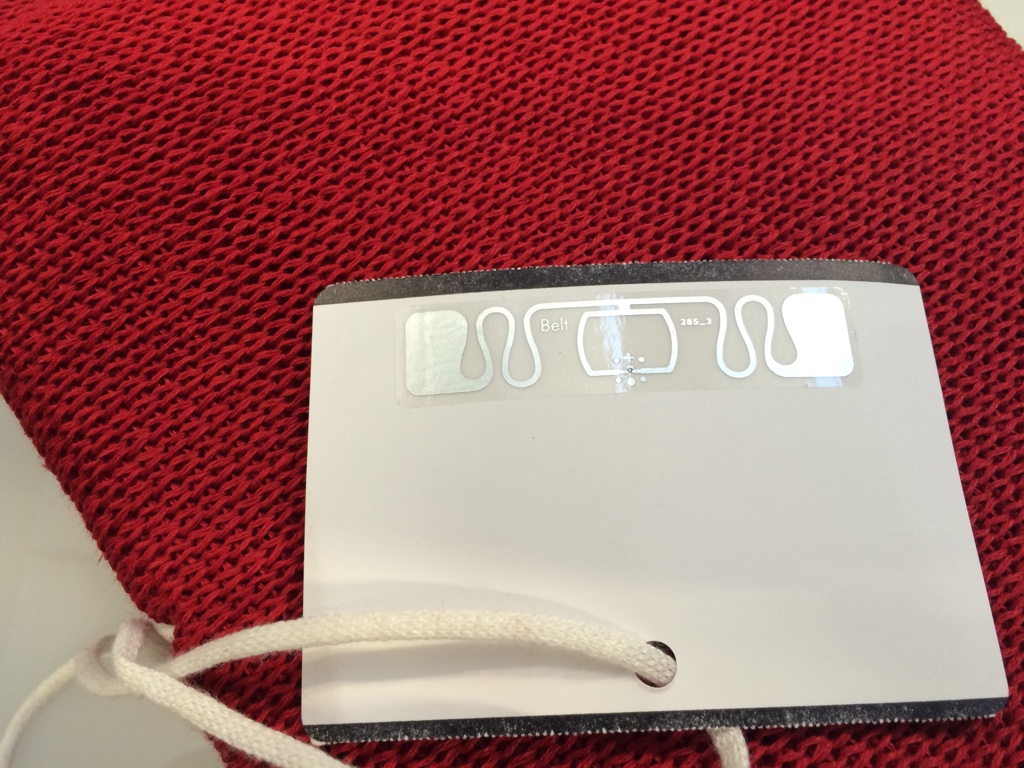
Along with IMAX's role in developing samples, Lunigiane as producer is an integral part of the Max Mara scheme of things, whose WHOLEGARMENT usage, acording to both companies, is increasing.
Lunigiane is a unique luxury WHOLEGARMENT knitwear manufacturer located in a very beautiful part of the world using the latest technology to produce for the perfect customer - the luxury Max Mara brands. In fact, in many ways, this is every knitwear manufacturer’s dream.
However, underneath its glamourous exterior, this is actually a very efficiently managed and highly technical business with vision and the desire to do things to the very highest standards. Lunigiane, as an early adopter of Shima Seiki’s WHOLEGARMENT technology and modern manufacturing methods, is truly a 21st century pioneer in knitwear manufacturing.
Max Mara: A champion of Shima Seiki WHOLEGARMENT technology
WHOLEGARMENT is a ‘must have’ technology for Italian knitwear manufacturer Martignoni Paola
New Twins set to become leading player in theatre of WHOLEGARMENT knitwear
MIND Srl – A WHOLEGARMENT Success Story from Italy’s Veneto Region
WHOLEGARMENT knitting technology helps set New Esse Maglieria apart from its competitors
WHOLEGARMENT investment cuts labour costs and creates new opportunities for Sabry Maglieria
La Trama: A WHOLEGARMENT Powerhouse In Italy’s Marche Region

Business intelligence for the fibre, textiles and apparel industries: technologies, innovations, markets, investments, trade policy, sourcing, strategy...
Find out more